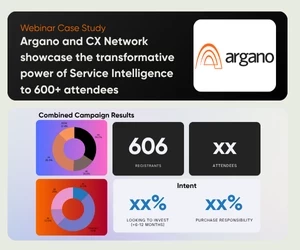Are you truly engaging with your customers?
Leading CX expert Adrian Swinscoe explains how four well-known companies created strategies to engage with their customers and improve customer retention
Add bookmark
Adrian Swinscoe has been growing and helping develop customer-focused large and small businesses for 20 years. Here he describes how four well-known companies created strategies to engage with their customers, build their customer retention and improve their overall service and customer experience.
Customer service and overall customer experience are pretty easy to understand. At least, it’s pretty straight forward to gauge what is good, what is not so good and what needs to be improved. But what about customer engagement? What does it mean to improve a company’s level of engagement with its customers?
If you ask a number of different people about what customer engagement means, you’re likely to get a number of definitions – with most of them centering on developing ongoing and loyal relationships.
Building lasting customer relationships
That’s great, but if you look closer at what’s actually being done to achieve this, then it gets a little troubling. The reason is that many, if not most, of the customer engagement tactics and strategies that are being employed are directly and only focused on encouraging customers to spend more and spend more frequently.
That’s fair enough, you might say, but is that the best way to build ongoing and loyal relationships?
Real, lasting and durable relationships aren’t just transactional, they are much more complicated and contextual than that. As a result, I believe that customer engagement is an area where many companies have an opportunity to differentiate themselves. They can do this by thinking critically and more creatively about what engagement is, and what it could mean for them and their customers.
Four famous brands and how they successfully engaged with customers
Consider what these brands have done and the impact their initiatives have had on their relationships with their customers:
- Ryanair implemented a series of improvements to its customer experience that would, in the words of their CEO, help them stop p***ing off their customers. At the same time, these changes didn't threaten their cost leadership position. This has helped them drive record profits and passenger numbers.
- Carhartt implemented technology that connects customers with their advocates, giving them access to ‘trusted advice’ when researching and then making a purchase. This led to a 6-10 fold increase in their conversion rates over other self-service customers, and a 10-25 per cent increase in the average order value.
- Gravity Payments’ CEO Dan Price implemented a new minimum salary of $70,000 for all employees, in large part to promote employee engagement, productivity and emotional wellbeing. However, six months after the initiative, leads per month had grown from 30 to 2,000 inquiries per month, the firm had received 1,000s of new job applicants, profits doubled, employee retention soared and client retention had grown from its already high base of 91 percent to 95 percent (the industry average client retention rate is 68 percent).
- Swisscom deployed innovative technology to be used by some of their existing, tech-savvy customers to crowd source their ‘in-field’ customer service. Doing so has helped them deflect calls, reduce the number of support requests in many of their traditional customer service channels, increase their overall customer satisfaction and generate additional sales.
What the customer wants vs monetary value
These are just some examples of firms that are thinking differently about how they can improve the relationships they have with their customers. They are doing this by focusing on helping, or doing the things that matter the most to their clients.
When it comes to customer engagement, it’s no longer good enough to just think about the monetary value of the relationships that we have with customers, how we can increase spend and frequency of spend.
To stand out, firms need to go deeper, be braver and think differently if they are to develop the sort of relationships with their customers that they want.
For many, that will be a challenge, but for others it will be an opportunity.
If you enjoyed this article, share it with your peers on LinkedIn or with the wider world on Twitter.













